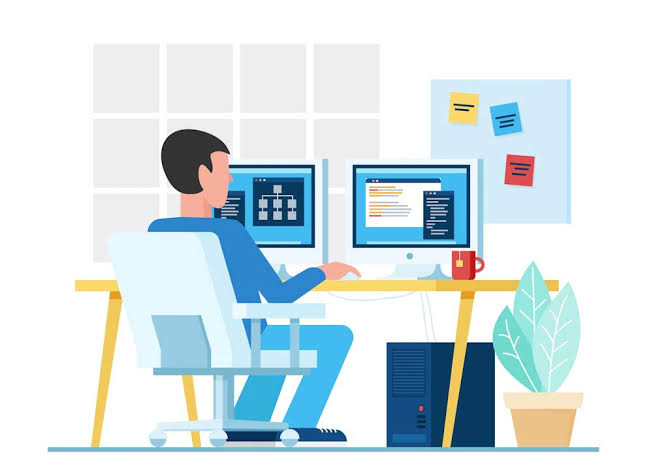Time tracking with screenshots and remote employment monitoring

Productivity Enhancement for Remote Workers: Using social media
It might be challenging to remain productive and motivated when working remotely. Lack of face-to-face interaction with coworkers, domestic distractions, and difficulty separating work from leisure time are just a few factors that can hinder productivity. Thankfully, there is a strategy that can keep remote workers concentrated and productive: the Power of Eight method.
Overview of Remote Work and Its Challenges
The COVID-19 epidemic has exacerbated the remote work trend, which has become increasingly common in recent years. Even if working from home offers numerous advantages, there are particular difficulties. For instance, remote workers could have issues with:
- Being alone and isolated
- Separation of personal and professional life is complicated.
- distractions caused by family members or roommates
- not having access to office supplies and technology
- Collaboration with coworkers in various time zones can be challenging.
Finding techniques to stay involved and focused is crucial because these difficulties might result in diminished productivity and motivation.
Remote Employ Monitoring
What we mean by “remote employee monitoring” is keeping tabs on workers who aren’t in the same physical place as their desks. Companies frequently use it to safeguard confidential information, increase employee efficiency, and monitor work quality. While some companies may see this as a means to boost productivity and responsibility, others may be wary of the potential risks to their employee’s personal information and trust. The following are some of the most widely used techniques for keeping tabs on distant employees:
Many companies use time-tracking software to monitor when employees clock in and out to ensure that workers are punctual and productive.
The software can monitor workers’ online behavior, including the websites they visit, the programs they use, and the time they spend in front of the screen.
Employees’ typing speeds and overall productivity can be gauged using software that records each key they press. However, its intrusive character can make it divisive.
Recording employees’ screens is a common practice for auditing, providing feedback, and troubleshooting purposes.
Employers may monitor emails, IMs, and other forms of electronic communication to ensure that workers are adhering to business policy and not engaging in inappropriate conduct.
Remote employees who frequently find themselves away from the office may have their whereabouts and activities tracked by a global positioning system (GPS) during the workday.
Mobile apps that allow businesses to keep tabs on what their workers are up to on personal or company-issued mobile devices are becoming increasingly common.
Although there are benefits to businesses from keeping tabs on their employees’ activities, doing so also creates ethical and legal questions. Laws and regulations exist in many jurisdictions concerning the monitoring of employees, particularly concerning privacy and data protection. Employers are responsible for informing their staff of their monitoring policies and obtaining their approval before implementing them.
A productive working relationship between employers and remote workers requires a balance between productivity and trust. Establishing open lines of communication, defining clear expectations, and fostering a culture of trust are all essential when introducing new monitoring measures. In addition to facilitating the achievement of the company’s productivity and safety targets, this method fosters an atmosphere where employees feel valued and appreciated.
Time Tracking with a screenshot
A time tracker with screenshots is a piece of software or a website that keeps tabs on your time spent on various tasks. It’s a helpful resource for monitoring how much time is spent on each task, allowing you to allocate your resources better.
Time-monitoring programs function by collecting regular screenshots of your desktop and then analyzing them to determine which programs are currently running and what they are doing. As a bonus, it can also track your Facebook, Twitter, and email usage and monitor your keyboard and mouse movements.
Most time-tracking programs can capture all actions taken on a computer. The Definition of a Time Clock A time tracker is a piece of software or a website that keeps tabs on your time spent on various tasks. It’s a helpful resource for monitoring how much time is spent on each task, allowing you to allocate your resources better.
Time-monitoring programs function by collecting regular screenshots of your desktop and then analyzing them to determine which programs are currently running and what they are doing. As a bonus, it can also track your Facebook, Twitter, and email usage and monitor your keyboard and mouse movements. Websites visited while in private browsing mode are often recorded by most-time monitoring programs. Computer, including incognito tabs and history.
Qualities of efficient timekeeping programs
There is a dizzying array of solutions available for time-tracking software. It can be confusing to sort through all the options to find the one that will best serve your purposes. Let’s look at what makes good time-tracking software so great.
- Screenshots
Random screenshots can help you monitor how your staff spends their time during the workday. You can select from four screenshot modes in the Webwork tracker to dig deeper into recorded time, activity, and other metrics.
- Management of effort
Teams can use task management better to coordinate their efforts on shared projects or assignments. Through the site, workers can have open lines of communication and share updates on current and future projects. In this approach, everyone on the team will know exactly what each person is working on and when they expect to finish their tasks. And supervisors can see what tasks are being worked on by which team members at any given time.
- Use of Multiple Electronic Devices
Your time-tracking software must be accessible from any location since more and more individuals are choosing to work remotely. Any gadget you use to do your work should be compatible with your time-tracking program. Webwork, for example, can be used with Windows, Mac, and Linux. Furthermore, the software may be downloaded from Google Play and Apple’s software Stores.
Webwork Time Tracker is a web-based time tracking and employee monitoring application designed to help organizations and distributed teams operate more efficiently.
You can do the following with Webwork’s assistance:
- Real-time monitoring of employee activity allows you to see how much time they spend on various tasks, such as browsing the web and taking screenshots.
- Check in on workers’ arrival and departure times, see how far along individual jobs and larger projects are, and more with an attendance tracking system.
- Using your team’s actions and results as data, you can generate reports, spot trends, and boost efficiency.
- Plus, lots of other stuff, too! Webwork Time Tracker can help you get more done in less time.
- To keep tabs on how much time employees spend on tasks and how productive they are, firms can use Webwork.
Using Webwork, you can:
Real-time monitoring of all activities, including online browsing and screenshots, performed by employees.
Check in on workers’ arrival and departure times, see how far along individual jobs and larger projects are, and more with an attendance tracking system. Use your team’s actions and results to generate reports, investigate patterns, and enhance efficiency.
Summary and Lasting Impression
The Power of 8 technique is an effective tool for raising motivation and productivity in remote work settings. A sense of community and support frequently lacking in remote work situations can be developed by assembling a group of eight people with comparable goals and interests.
Remote employees should make the most of the tools and resources, set clear expectations and rules, and communicate effectively if they want to successfully apply The Power of 8 technique. While obstacles may be overcome, The Power of 8 procedure has several advantages for remote employees who want to maintain their attention, motivation, and productivity.
Therefore, why not give The Power of 8 approach a shot and see how it might benefit you and your remote team?



